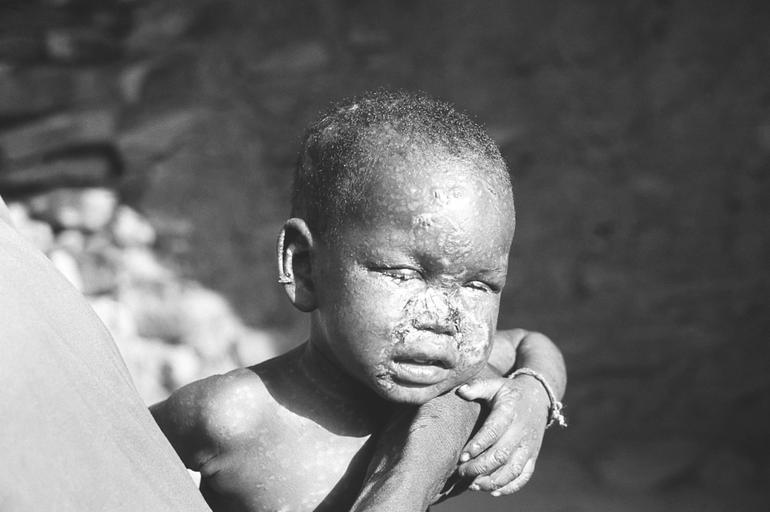MAKE A MEME
View Large Image

| View Original: | 1969_Upper_Volta_b.png (999x664) | |||
| Download: | Original | Medium | Small | Thumb |
| Courtesy of: | commons.wikimedia.org | More Like This | ||
| Keywords: 1969 Upper Volta b.png en The child depicted in this 1969 photograph was an inhabitant of the former Republic of Upper Volta West Africa now known as Burkina Faso Suffering from smallpox this child also was battling the secondary infections that had developed on his face amongst the maculopapular smallpox lesions which had developed Signs and Symptoms - For the first 7 to 17 days after exposure the infected person feels fine and is not contagious cannot spread the disease - After 7-17 days the first symptoms of smallpox appear These include fever tiredness head and body aches and sometimes vomiting The fever is usually high in the range of 101 to 104 degrees Fahrenheit At this time people are usually too sick to carry on their normal activities This stage may last for 2 to 4 days - Next a rash appears first as small red spots on the tongue and in the mouth A rash then appears on the skin starting on the face and spreading to the arms and legs and then to the hands and feet Usually the rash spreads to all parts of the body within 24 hours - The rash becomes raised bumps and the bumps become pustules which are raised usually round and firm to the touch as if there ôs a small round object under the skin - The pustules begin to form a crust and then scab By the end of the second week after the rash appears most of the sores have scabbed over - The scabs begin to fall off leaving scars Most scabs will have fallen off three weeks after the rash first appears 1969 CDC http //phil cdc gov/phil/details asp CDC/ Dr Robinson 1968 and Dr Robert Newman 2001 other versions PD-USGov Uploaded with UploadWizard Smallpox Burkina Faso in the 1960s Health in Burkina Faso Images from the CDC Public Health Image Library | ||||